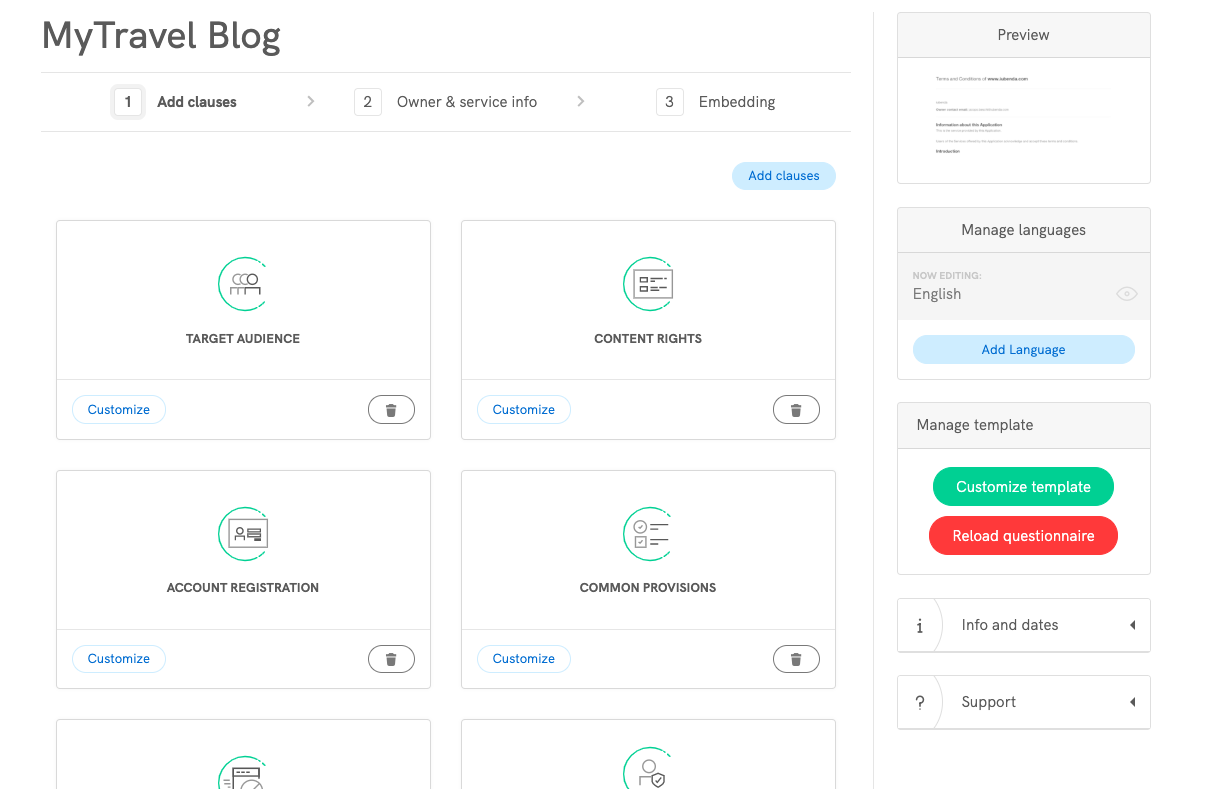Documentation
Terms and conditions for blogs – Example and what they should include
What should Terms and Conditions for a blog include? When are Terms of Service needed? In this post, we’ll look at an example of a Terms & Conditions document and the best way to create one that suits your needs.

What are terms and conditions?
Why are terms and conditions important for bloggers and when are they needed?
As mentioned above, Terms and Conditions set the way in which your product, service or content may be used, in a legally binding way. They’re important for protecting your content from a copyright perspective as well as for protecting you from potential liabilities.
They typically contain copyright clauses, disclaimers and terms of sale, allow you to set governing law, list mandatory consumer protection clauses, and more.
You’ll likely need to set Terms & Conditions if you:
- want to set the rules for user behavior (including comments) and state grounds for termination of accounts;
- allow your users to upload comment or content;
- have different user levels (eg. registered vs non-registered);
- participate in affiliate programs;
- provide advice which can potentially cause harm if misused;
- would like to have some legally enforceable control over, and set rules about, how your product, service or content may be used.
Particular emphasis should be given to copyright and the limitation of liability clauses (and disclaimers), for example when giving advice or promoting affiliate products.
Where should you place Terms and conditions on your blog?
As Terms and Conditions are legally binding agreements, it is best practice (and required in some instances) that they be easily accessible to users. For this reason, we suggest making them readily available *both* at the site of any explicit agreement (such as on sign-up and account creation forms), and in the footer of your blog.
More on compliance for bloggers and web publishers
This article is a part of our series on compliance for bloggers and web publishers. Read also:
Example Blog Terms & Conditions
The following is a Terms and Conditions document created in 5 minutes for a fictional blog (click the button to open up the terms document).
The terms and conditions document was generated and customized using iubenda’s user-friendly visual interface.

Our Terms and Conditions Generator lets you easily generate and manage Terms and Conditions that are customizable from over 100 clauses, available in 11 languages, drafted by an international legal team and up to date with the main international legislations. The solution is optimized for blogs, e-commerce and even complex scenarios like marketplace and, Affiliate scenarios.
Need a Terms and conditions document? Click the button below to generate your own (try it risk free for 14 days)!
About us
The solution to draft, update and maintain your Terms and Conditions. Optimised for eCommerce, marketplace, SaaS, apps & more.
